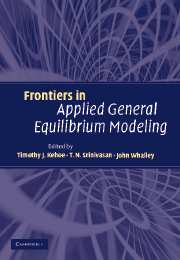58 results
15 - Rural practitioner vignette
-
-
- Book:
- Aging People, Aging Places
- Published by:
- Bristol University Press
- Published online:
- 18 December 2021
- Print publication:
- 31 March 2021, pp 189-194
-
- Chapter
- Export citation
Plateau icefields as contributing areas to valley glaciers and the potential impact on reconstructed ELAs: a case study from the Lyngen Alps, North Norway
-
- Journal:
- Annals of Glaciology / Volume 28 / 1999
- Published online by Cambridge University Press:
- 14 September 2017, pp. 97-102
-
- Article
-
- You have access
- HTML
- Export citation
Ice exposures in rock glaciers
-
- Journal:
- Journal of Glaciology / Volume 40 / Issue 135 / 1994
- Published online by Cambridge University Press:
- 20 January 2017, pp. 427-429
-
- Article
-
- You have access
- HTML
- Export citation
Periglacial Features on the Margins of a Receding Plateau Ice Cap, Lyngen, North Norway
-
- Journal:
- Journal of Glaciology / Volume 27 / Issue 97 / 1981
- Published online by Cambridge University Press:
- 20 January 2017, pp. 492-496
-
- Article
-
- You have access
- HTML
- Export citation
1 - AFTA–NAFTA: Trade and Investment Issues
- from II - Background Papers
-
-
- Book:
- ASEAN-Canada Forum 2008
- Published by:
- ISEAS–Yusof Ishak Institute
- Published online:
- 21 October 2015
- Print publication:
- 01 February 2010, pp 13-26
-
- Chapter
- Export citation
Leveling the Carbon Playing Field: International Competition and US Climate Policy Design by Trevor Houser, Rob Bradley, Britt Childs, Jacob Werksman and Robert Heilmayr Washington, DC: Peterson Institute for International Economics, 2008
-
- Journal:
- World Trade Review / Volume 8 / Issue 4 / October 2009
- Published online by Cambridge University Press:
- 17 September 2009, pp. 611-613
- Print publication:
- October 2009
-
- Article
- Export citation
Selective effects of ECT on hypothalamic—pituitary activity
-
- Journal:
- Psychological Medicine / Volume 17 / Issue 2 / May 1987
- Published online by Cambridge University Press:
- 09 July 2009, pp. 319-328
-
- Article
- Export citation
Part Three - Macroeconomics and Finance
-
- Book:
- Frontiers in Applied General Equilibrium Modeling
- Published online:
- 14 January 2010
- Print publication:
- 17 January 2005, pp -
-
- Chapter
- Export citation
Index
-
- Book:
- Frontiers in Applied General Equilibrium Modeling
- Published online:
- 14 January 2010
- Print publication:
- 17 January 2005, pp 429-436
-
- Chapter
- Export citation
Frontmatter
-
- Book:
- Frontiers in Applied General Equilibrium Modeling
- Published online:
- 14 January 2010
- Print publication:
- 17 January 2005, pp i-iv
-
- Chapter
- Export citation
Part One - General Equilibrium Theory
-
- Book:
- Frontiers in Applied General Equilibrium Modeling
- Published online:
- 14 January 2010
- Print publication:
- 17 January 2005, pp -
-
- Chapter
- Export citation
14 - Decompositional Analysis Using Numerical Equilibrium Models: Illustrations from Trade Literature
-
-
- Book:
- Frontiers in Applied General Equilibrium Modeling
- Published online:
- 14 January 2010
- Print publication:
- 17 January 2005, pp 378-401
-
- Chapter
- Export citation
List of Contributors
-
- Book:
- Frontiers in Applied General Equilibrium Modeling
- Published online:
- 14 January 2010
- Print publication:
- 17 January 2005, pp vii-x
-
- Chapter
- Export citation
Part Two - Computational Methods
-
- Book:
- Frontiers in Applied General Equilibrium Modeling
- Published online:
- 14 January 2010
- Print publication:
- 17 January 2005, pp -
-
- Chapter
- Export citation
Introduction
-
-
- Book:
- Frontiers in Applied General Equilibrium Modeling
- Published online:
- 14 January 2010
- Print publication:
- 17 January 2005, pp 1-12
-
- Chapter
- Export citation
Contents
-
- Book:
- Frontiers in Applied General Equilibrium Modeling
- Published online:
- 14 January 2010
- Print publication:
- 17 January 2005, pp v-vi
-
- Chapter
- Export citation
Part Five - General Equilibrium Restrictions and Estimation of Hedonic Models
-
- Book:
- Frontiers in Applied General Equilibrium Modeling
- Published online:
- 14 January 2010
- Print publication:
- 17 January 2005, pp -
-
- Chapter
- Export citation
Part Six - Policy Uses and Performance of AGE Models
-
- Book:
- Frontiers in Applied General Equilibrium Modeling
- Published online:
- 14 January 2010
- Print publication:
- 17 January 2005, pp -
-
- Chapter
- Export citation
Acknowledgments
-
- Book:
- Frontiers in Applied General Equilibrium Modeling
- Published online:
- 14 January 2010
- Print publication:
- 17 January 2005, pp xi-xii
-
- Chapter
- Export citation

Frontiers in Applied General Equilibrium Modeling
- In Honor of Herbert Scarf
-
- Published online:
- 14 January 2010
- Print publication:
- 17 January 2005



